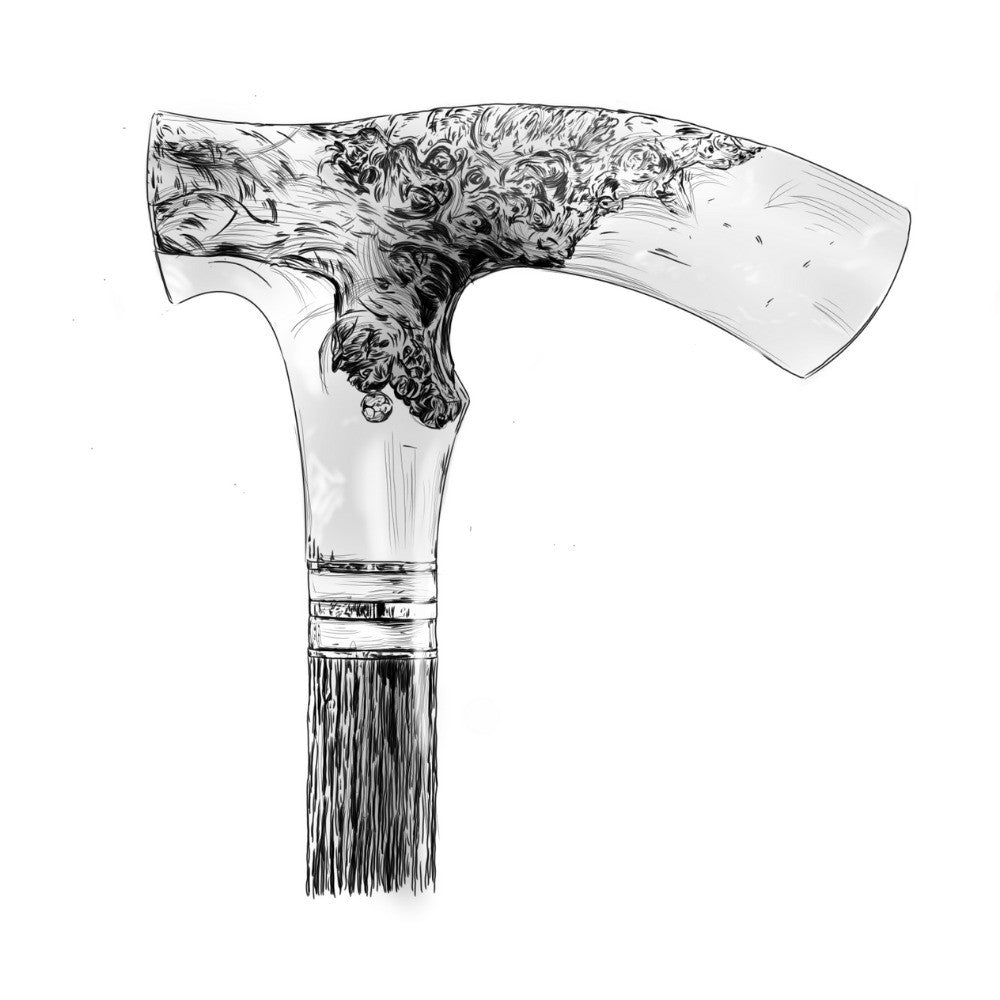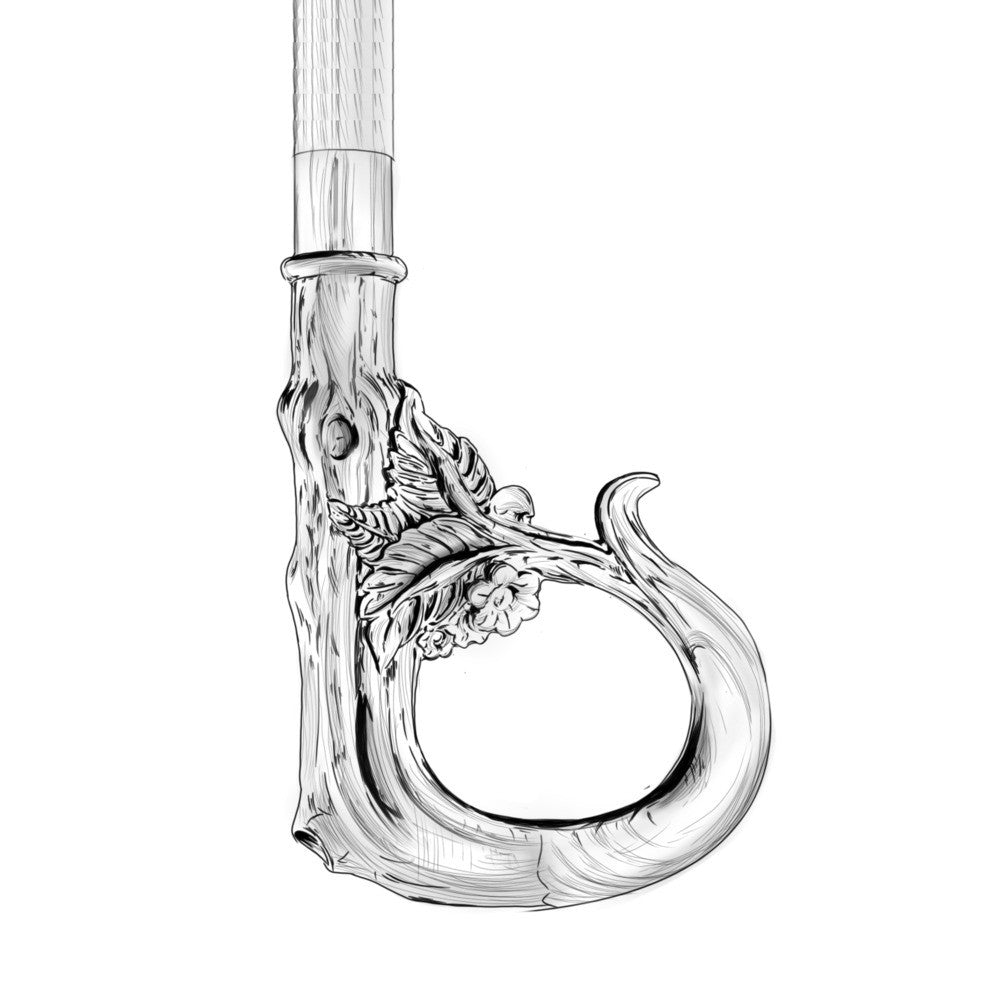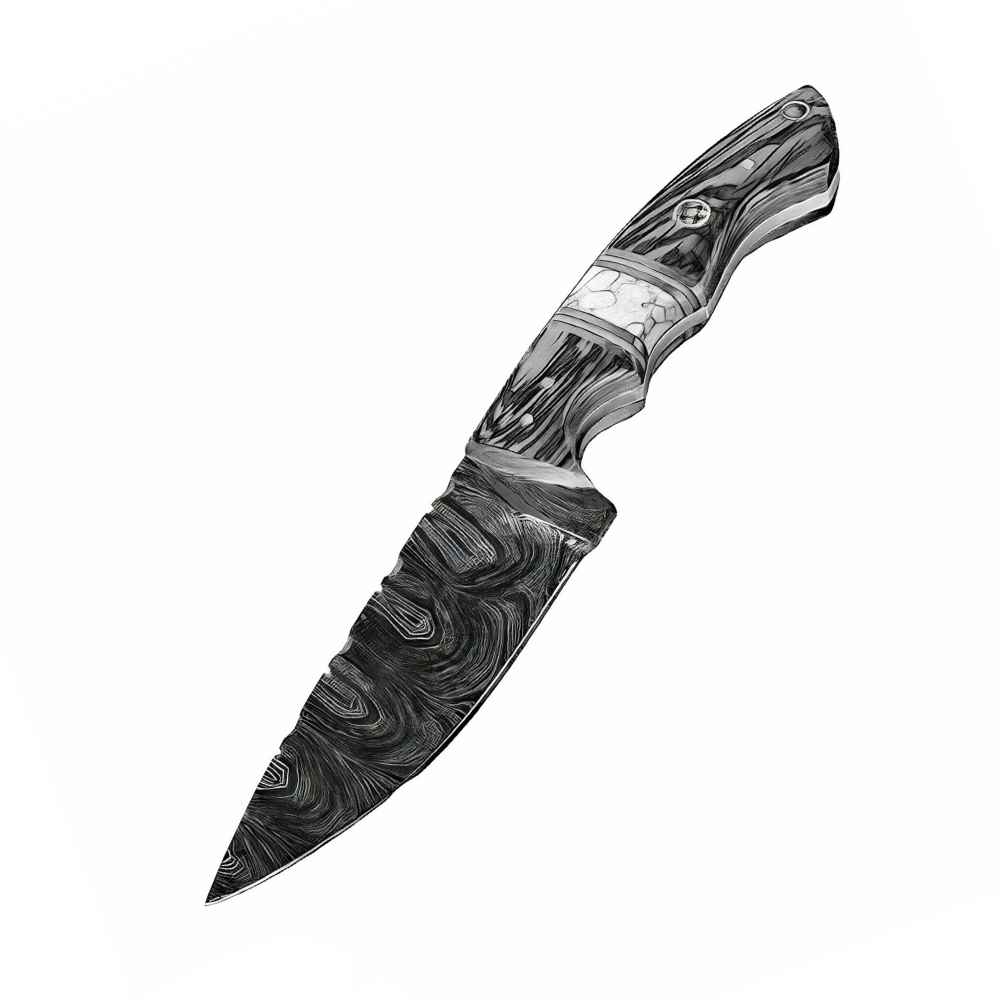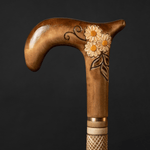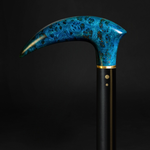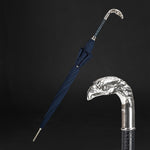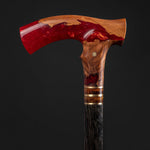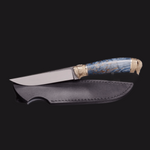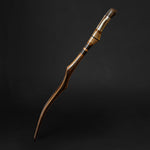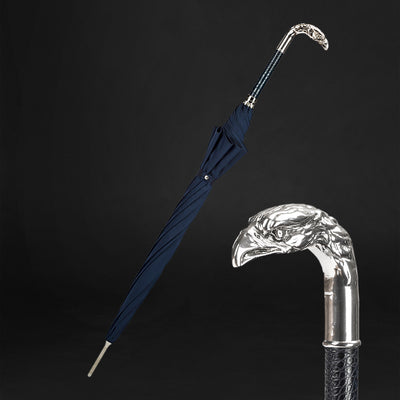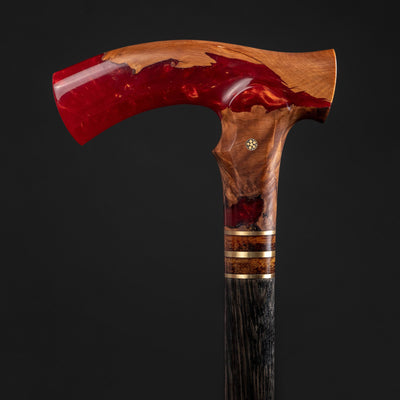You have no items in your shopping cart.
Recent Posts
-
The Art of Christmas Design: Walking Canes That Celebrate the Season in Style
-
How an Ergonomic Walking Cane Handle Prevents Hand and Wrist Strain?
-
How to Walk With a Cane Correctly to Avoid Back or Shoulder Strain?
-
5 Common Mistakes People Make When Buying a Walking Cane (and How to Avoid Them)
-
How to Choose a Walking Cane That Reflects Your Personality (Not Just Your Needs)?
-
Walking Canes That Match Formalwear for Weddings and Events
MOST POPULAR NOW
08
Jul
As outdoor enthusiasts and photographers, we are constantly on the lookout for ways to enhance our experiences and capture breathtaking moments. One often overlooked but invaluable tool for outdoor photography is the humble walking stick. In this article, we will delve into the importance of walking sticks in outdoor photography and explore how they can elevate your photographic endeavors.
Walking sticks for outdoor photography: a photographer's companion
Stability and balance
When it comes to outdoor photography, stability and balance are key factors in capturing sharp, clear images. Uneven terrains, slippery surfaces, and challenging angles can make it difficult to maintain a steady hand while taking photographs. This is where walking sticks come to the rescue. By providing additional support and stability, walking sticks allow photographers to maintain balance and reduce camera shake, resulting in sharper images and better overall composition.
Extended reach
Nature is often vast and sprawling, presenting us with captivating scenes that go beyond our immediate reach. Walking sticks can act as an extension of our arms, allowing us to explore and capture those elusive shots that would otherwise be out of reach. Whether it's a majestic waterfall cascading down a cliff or a vibrant wildflower nestled amidst tall grass, the added reach provided by a walking stick enables us to frame the shot exactly as we envision it.
Versatility and adaptability
One of the greatest advantages of walking sticks in outdoor photography is their versatility. These multifunctional tools can serve a multitude of purposes, making them indispensable companions on our photographic expeditions. Not only do they assist in stabilizing our camera gear, but they can also double as monopods or tripods, enabling us to set up time-lapse shots or capture long-exposure images with ease. Additionally, walking sticks with built-in mounts can even hold our smartphones or action cameras, opening up new possibilities for creative shots and perspectives.
Natural element integration
Photography is about capturing the essence of the natural world, and walking sticks can help us achieve just that. By using walking sticks made from materials like wood or bamboo, we introduce a natural element into our compositions, creating a harmonious connection between the subject and the environment. This subtle inclusion adds depth and authenticity to our photographs, making them more visually appealing and relatable to viewers.
Fitness and endurance
Outdoor photography often requires us to venture off the beaten path and explore rugged terrains. In such situations, walking sticks provide more than just stability; they also offer physical support and promote endurance. By redistributing weight and providing additional points of contact, walking sticks reduce strain on our joints and muscles, allowing us to hike longer distances and carry our photography gear comfortably. This added fitness and endurance can significantly enhance our outdoor photography experiences, enabling us to access remote locations and capture unique perspectives.
In conclusion, walking sticks are not mere accessories for hiking or trekking; they are invaluable tools that can greatly benefit outdoor photographers. From providing stability and balance to extending our reach and offering versatility, walking sticks have the potential to elevate our photography to new heights. By incorporating these indispensable companions into our gear arsenal, we can overcome challenges, explore new horizons, and capture stunning images that resonate with viewers.

Benefits of using walking sticks in outdoor photography
Outdoor photography is a thrilling pursuit that allows us to capture the beauty of nature and create stunning visual narratives. As photographers, we are always seeking ways to enhance our craft and elevate our images. One often underestimated tool that can make a significant difference in outdoor photography is the walking stick. In this article, we will explore the benefits of using walking sticks in outdoor photography and how they can enhance your photographic experience.
Stability and improved balance
When it comes to capturing sharp, clear images, stability and balance are crucial. Outdoor environments often present uneven terrains, slippery surfaces, or challenging shooting angles. These factors can make it difficult to maintain a steady hand while taking photographs, resulting in blurry or shaky images. This is where walking sticks prove their worth. By providing an additional point of contact with the ground, walking sticks offer stability and improve balance. They act as a reliable support system, allowing photographers to maintain a steady grip on their camera and minimize camera shake. The result is sharper images and better overall composition.
Extended reach and perspective
Nature is vast and brimming with captivating scenes that sometimes lie beyond our immediate reach. Whether it's a stunning landscape, a unique wildlife encounter, or an intricate detail in the environment, walking sticks can extend our reach and perspective. By using a walking stick as an extension of our arm, we can explore and capture those elusive shots that would otherwise be inaccessible. We can effortlessly frame the shot exactly as we envision it, bringing distant subjects closer and creating visually engaging compositions.
Reducing camera shake and blur
Camera shake is a common challenge in outdoor photography, especially when shooting in low-light conditions or using telephoto lenses. Even the slightest movement can result in blurred images and missed opportunities. Walking sticks provide a practical solution to this problem. By offering a stable support base, they help reduce camera shake and allow photographers to achieve sharper images. The walking stick serves as a reliable anchor, absorbing vibrations and minimizing unwanted movements caused by hand tremors or external factors. With reduced camera shake, photographers can confidently capture the details and intricacies of their subjects with greater precision.
Increased versatility in compositions
Photography is an art of creativity and composition. Walking sticks play a versatile role in expanding our creative possibilities. Beyond providing stability, they can be utilized as useful tools for composing unique shots. For instance, by adjusting the height of the walking stick, photographers can experiment with different angles and perspectives. They can achieve dynamic low-angle shots by placing the camera closer to the ground or capture aerial views by extending the walking stick above their heads. Additionally, walking sticks can act as natural leading lines, guiding the viewer's gaze towards the focal point of the photograph and creating a sense of depth and dimension.
Walking sticks are not just accessories for hiking or trekking; they are invaluable companions for outdoor photographers. The benefits they offer, such as stability, improved balance, extended reach, and reduced camera shake, significantly contribute to the quality of our images. By incorporating a walking stick into our photographic gear, we can enhance our ability to capture breathtaking moments and tell compelling visual stories. So, next time you embark on an outdoor photography adventure, don't forget to bring along a trusty walking stick and witness the difference it can make in your photography.
Choosing the right walking stick for outdoor photography
When it comes to outdoor photography, having the right equipment can make a world of difference in capturing stunning images. One often overlooked but essential tool for photographers is a reliable walking stick. But how do you choose the right walking stick for outdoor photography? In this article, we will discuss the factors to consider when selecting a walking stick that meets the specific needs of outdoor photographers.
Factors to consider
Material and weight
The material of the walking stick plays a significant role in its weight, durability, and overall performance. Common materials for walking sticks include aluminum, carbon fiber, and various types of wood. Aluminum walking sticks are lightweight and offer excellent strength, making them ideal for photographers who prefer a lightweight setup. Carbon fiber walking sticks are even lighter and provide superior vibration dampening, reducing the risk of camera shake. Wooden walking sticks, on the other hand, offer a classic and natural aesthetic appeal, but they tend to be heavier. Consider your preferences for weight, durability, and aesthetics when selecting the material of your walking stick.
Height and adjustability
The height of the walking stick is an important factor to consider, as it affects the comfort and stability of your photography setup. Look for a walking stick that allows for easy height adjustment. Adjustable walking sticks give you the flexibility to adapt to different shooting situations and personal preferences. They enable you to extend the stick to a comfortable height when shooting from elevated positions or collapse it for easy transportation and storage. Opting for an adjustable walking stick ensures that you can maintain the optimal shooting position and stability, regardless of the terrain or shooting angle.
Grip and comfort
Photographers often spend extended periods holding their equipment, including the walking stick. Therefore, it's crucial to choose a walking stick with a comfortable grip. Look for walking sticks with ergonomic handles that provide a secure and comfortable grip. Rubberized or foam handles offer excellent traction and cushioning, reducing hand fatigue during long photography sessions. Some walking sticks even come with additional features like wrist straps, allowing you to securely hold the stick without exerting unnecessary pressure on your hands. Prioritize comfort and grip to ensure a pleasant and pain-free experience while using the walking stick.
Durability and weather resistance
Outdoor photography often takes us to rugged and unpredictable environments where weather conditions can be harsh. Therefore, it's important to choose a walking stick that is durable and weather-resistant. Consider walking sticks that are built to withstand various outdoor elements, such as moisture, temperature changes, and rough terrains. Look for features like corrosion-resistant materials and reinforced joints. Additionally, consider the walking stick's ability to handle weight and pressure, especially if you plan to use it as a monopod or tripod. Investing in a durable and weather-resistant walking stick ensures its longevity and reliability in challenging outdoor conditions.
Selecting the right walking stick for outdoor photography is essential to enhance your comfort, stability, and overall photography experience. Consider factors such as material and weight, height and adjustability, grip and comfort, as well as durability and weather resistance. By choosing a walking stick that aligns with your specific needs and preferences, you can confidently navigate outdoor environments and capture breathtaking images with ease.
Using walking sticks for outdoor photography
Setting up your walking stick
A walking stick can be a useful tool for outdoor photography, providing stability and support for your camera. Here are two important steps to consider when setting up your walking stick for photography:
- Adjusting the height: Most walking sticks have adjustable height settings, allowing you to find the perfect height for your photography needs. To adjust the height:
- a. Loosen the locking mechanism: Most walking sticks have a locking mechanism near the top that holds the sections together. Look for a lever or twist lock and loosen it to adjust the height.
- b. Determine the ideal height: Consider the type of photography you will be doing and the most comfortable height for you. Generally, a height that brings the camera to eye level or slightly below is recommended.
- c. Adjust the sections: Once the locking mechanism is loosened, extend or retract the sections of the walking stick to achieve the desired height. Make sure to align the holes or markings on the sections to ensure a secure fit.
- d. Lock the mechanism: Once you have set the desired height, tighten the locking mechanism to secure the sections in place. Test the stability by putting weight on the walking stick and making sure it doesn't collapse.
- Securing the camera mount: To attach your camera to the walking stick, you will need a camera mount or adapter. There are various options available, including ball heads, clamp mounts, or specialized camera mounts designed specifically for walking sticks. Follow these steps to secure the camera mount:
- a. Select a suitable camera mount: Depending on your preference and the type of camera you have, choose a camera mount that can securely hold your equipment. Ensure that the mount is compatible with your walking stick and camera.
- b. Attach the mount: Most camera mounts have a standard 1/4-inch screw that can be attached to the tripod socket on the bottom of your camera. Align the screw with the socket and twist it in until it is securely attached.
- c. Mount the camera: Once the camera mount is securely attached to your camera, position the camera on top of the walking stick, aligning the mount's screw with the mount socket on the walking stick. Twist the camera onto the walking stick until it is securely fastened.
- d. Check stability: Ensure that the camera is firmly attached and that the walking stick is stable enough to support its weight. Make any necessary adjustments to the mount or walking stick to achieve the desired stability.

Techniques for optimal photography
When using a walking stick for photography, there are several techniques you can employ to enhance your images. Here are some tips to consider:
- Stability and balance tips:
Hold the walking stick firmly and use it as a stabilizing tool to minimize camera shake. This becomes especially important when shooting in low-light conditions or using longer focal lengths.
Keep your elbows tucked in close to your body to provide additional stability and balance.
Take slow, controlled breaths to steady yourself and avoid unnecessary movement while capturing the shot.
If possible, use the walking stick as a monopod by resting the camera on top of it while gripping the stick firmly. This can provide extra stability for your shots.
- Exploring different angles and perspectives:
Experiment with various heights and angles by adjusting the height of your walking stick. Try shooting from a low angle or getting a higher perspective to add interest and uniqueness to your photographs.
Extend your walking stick horizontally or tilt it to capture shots from unconventional angles, giving a fresh perspective to your images.
- Panning shots and capturing motion:
Panning involves tracking a moving subject with your camera while using a slow shutter speed. The walking stick can assist in providing smoother panning movements, resulting in sharper subjects against a blurred background.
Hold the walking stick with one hand while using your other hand to pan and follow the subject. Maintain a steady movement and release the shutter when the subject is in the desired position.
- Low-light photography with a walking stick:
In low-light conditions, a walking stick can provide extra stability and support to help you capture sharp images. Use a tripod mount or adapter to attach your camera securely to the walking stick.
Consider using a remote shutter release or a self-timer to minimize camera shake when pressing the shutter button.
- Creative uses of walking sticks in composition:
Incorporate the lines and textures of the walking stick into your composition to add visual interest. Experiment with framing your subject using the walking stick as a natural frame or leading line.
Use the walking stick to create unique shadows or reflections that can enhance the overall composition of your photograph.
Remember to always practice safety when using a walking stick for photography. Be mindful of your surroundings and ensure that your equipment is securely attached to the walking stick. With these techniques, you can maximize the potential of your outdoor photography and capture stunning images with the assistance of a walking stick.
Maintenance and care of walking sticks
Taking care of your walking sticks is essential to ensure their longevity and optimal performance. Here are some tips for cleaning, maintenance, storing, and checking for wear and tear:
- Cleaning and maintenance tips:
Regularly clean your walking stick to remove dirt, mud, or other debris. Use a soft cloth or sponge with mild soap and water to gently wipe down the surface of the stick. Avoid using harsh chemicals or abrasive materials that could damage the stick's finish.
Pay attention to the grip or handle of the walking stick. If it's made of rubber or another material, clean it with a damp cloth to remove any dirt or sweat.
Dry the walking stick thoroughly after cleaning to prevent moisture from seeping into the wood or other materials, which could cause damage or decay.
If your walking stick has metal components, such as a tip or locking mechanism, check for rust or corrosion. If you notice any signs of rust, use a rust remover and then apply a protective coating, such as a rust-resistant spray, to prevent further corrosion.
- Storing and transporting walking sticks:
When not in use, store your walking stick in a cool, dry place away from direct sunlight. Excessive heat or sunlight exposure can cause the wood to warp or crack.
If your walking stick is adjustable, collapse or fold it according to the manufacturer's instructions before storing it. This will help save space and protect the stick from accidental damage.
Consider using a storage bag or case specifically designed for walking sticks to provide additional protection during transportation or when storing for extended periods.
- Checking for wear and tear:
Regularly inspect your walking stick for any signs of wear and tear, such as cracks, splintering, or loose components. Pay particular attention to areas where different sections of the stick are joined.
Check the tip of your walking stick for wear. If it's becoming worn or smooth, it may need to be replaced to maintain traction and stability.
If your walking stick has a wrist strap, examine it for any signs of fraying or weakening. Replace the strap if necessary to ensure its effectiveness in preventing accidental drops.
It's important to note that the care and maintenance requirements may vary depending on the materials and construction of your walking stick. Always refer to the manufacturer's guidelines or specific instructions provided with your walking stick for the best practices.
By following these cleaning, maintenance, storing, and checking guidelines, you can keep your walking sticks in good condition, prolong their lifespan, and continue to enjoy their support and functionality during your outdoor adventures.
Additional accessories for walking sticks
Attachments for photography
In addition to using a walking stick for stability during outdoor photography, there are several accessories you can consider to enhance your photography experience. Here are some attachments specifically designed for photography:
- Ball heads and gimbal heads:
Ball heads are tripod heads that allow for smooth and precise adjustments of the camera's position. They provide flexibility in positioning the camera and locking it securely into place.
Gimbal heads are designed to support longer and heavier lenses. They provide fluid movements and excellent stability when tracking subjects or capturing wildlife photography. Gimbal heads allow you to balance the weight of your camera and lens, reducing strain on your arm and providing smoother panning movements.
- Smartphone mounts and adapters:
Smartphone mounts and adapters allow you to attach your smartphone securely to the walking stick. This enables you to use your smartphone for photography or to easily access photography apps, such as intervalometers or remote shutter release apps.
Smartphone mounts and adapters are versatile accessories that can be adjusted to hold smartphones of different sizes, ensuring a secure fit while capturing photos or videos.
- Remote shutter releases:
Remote shutter releases are devices that allow you to trigger your camera's shutter remotely without physically pressing the shutter button on the camera. They come in wired or wireless options.
Using a remote shutter release eliminates the risk of camera shake caused by pressing the shutter button manually. It's particularly useful for long-exposure photography or situations where you want to minimize any movement while taking the shot.
When considering these accessories, ensure they are compatible with your walking stick and camera equipment. Additionally, be mindful of the weight capacity and stability of your walking stick to ensure it can support the additional accessories and equipment.
These attachments can expand the capabilities of your walking stick for photography, providing you with more control, convenience, and creative options while capturing your outdoor adventures.
Accessories for outdoor environments
When using walking sticks in various outdoor environments, there are additional accessories you can consider to enhance their performance and adaptability. Here are some accessories designed specifically for outdoor use:
- Rubber feet and spiked tips:
Rubber feet are attachments that can be placed over the standard tips of walking sticks. They provide better grip and stability on smooth or slippery surfaces, such as paved roads or indoor floors. Rubber feet are particularly useful for urban or indoor photography.
Spiked tips, on the other hand, are designed for outdoor terrains like dirt, grass, or rocky surfaces. They offer enhanced traction and stability, allowing you to navigate uneven terrain and provide stability for your walking stick.
- Snow baskets and mud baskets:
Snow baskets are large circular attachments that can be added to the tips of walking sticks when hiking in snowy conditions. They help prevent the walking stick from sinking deep into the snow by distributing the weight and providing additional support.
Mud baskets are similar to snow baskets but are specifically designed for muddy or soft terrains. They prevent the walking stick from sinking into the mud, ensuring stability and reducing the chance of getting stuck.
- Carry bags and straps:
Carry bags and straps are accessories that provide convenience and ease when transporting or storing your walking sticks. They typically come in the form of a bag or strap that can be slung over your shoulder or attached to your backpack. These accessories protect your walking sticks from scratches, allow for easy carrying, and keep them organized during transportation.
When choosing these accessories, ensure compatibility with your walking sticks and consider the specific outdoor conditions you'll be encountering. It's important to select accessories that suit your intended environment and provide the necessary functionality and support.
By utilizing these outdoor accessories, you can enhance the versatility and adaptability of your walking sticks, allowing you to confidently explore various terrains and environments while enjoying the benefits they offer.
Safety considerations for outdoor photography with walking sticks
When engaging in outdoor photography using walking sticks, it's essential to prioritize safety for both yourself and the environment. Here are some important safety considerations to keep in mind:
- Ensuring stability on uneven terrain:
Before venturing into uneven or challenging terrains, ensure that your walking stick is sturdy and in good condition. Check the locking mechanisms and tips to make sure they are secure.
Take your time and carefully assess the terrain to identify any potential hazards or obstacles that could affect your stability. Use your walking stick to provide additional support and balance while navigating uneven or slippery surfaces.
Take smaller steps and maintain a steady pace to prevent tripping or falling. Adjust the height of your walking stick to match the terrain and ensure optimal stability.
- Being mindful of surroundings:
Always be aware of your surroundings when using a walking stick for outdoor photography. Pay attention to your footing and any potential hazards like rocks, tree roots, or water bodies.
Be cautious of other people, wildlife, or delicate flora and fauna in the area. Maintain a safe distance and avoid disturbing or damaging the environment.
If you are photographing in crowded or popular areas, be considerate of other visitors and ensure your walking stick doesn't become an obstacle or hazard to them.
- Protecting the environment:
Practice Leave No Trace principles by minimizing your impact on the environment. Avoid trampling vegetation, disturbing wildlife habitats, or leaving any trace of your visit.
Stay on designated trails or paths and follow any regulations or guidelines provided by park authorities or land managers.
Be mindful of sensitive areas such as wetlands, fragile ecosystems, or culturally significant sites. Respect any restrictions or limitations imposed to preserve these areas.
Remember, safety should always be a priority when engaging in outdoor activities. By following these safety considerations, you can enjoy your photography adventures with walking sticks while minimizing risks and respecting the environment around you.

Summary: elevate your outdoor photography with walking sticks
Using walking sticks for outdoor photography can greatly enhance your experience and the quality of your images. Here's a recap of the benefits, techniques, and encouragement discussed:
Benefits:
Stability and balance: Walking sticks provide stability, minimizing camera shake and allowing you to capture sharper images.
Height adjustment: Adjustable walking sticks enable you to explore different angles and perspectives, adding depth and interest to your photographs.
Support for various accessories: Attachments such as ball heads, smartphone mounts, or remote shutter releases can be utilized with walking sticks, expanding your creative possibilities.
Adaptability to outdoor environments: Accessories like rubber feet, spiked tips, snow baskets, and mud baskets make your walking stick suitable for different terrains and weather conditions.
Height adjustment: Adjustable walking sticks enable you to explore different angles and perspectives, adding depth and interest to your photographs.
Support for various accessories: Attachments such as ball heads, smartphone mounts, or remote shutter releases can be utilized with walking sticks, expanding your creative possibilities.
Adaptability to outdoor environments: Accessories like rubber feet, spiked tips, snow baskets, and mud baskets make your walking stick suitable for different terrains and weather conditions.
Techniques:
Adjusting the height of your walking stick to find the ideal position for your photography needs.
Exploring different angles and perspectives by extending or tilting your walking stick.
Employing panning shots and capturing motion using slow shutter speeds.
Leveraging walking sticks for low-light photography stability.
Getting creative by incorporating the lines, textures, and shadows of your walking stick into compositions.
Exploring different angles and perspectives by extending or tilting your walking stick.
Employing panning shots and capturing motion using slow shutter speeds.
Leveraging walking sticks for low-light photography stability.
Getting creative by incorporating the lines, textures, and shadows of your walking stick into compositions.
Safety considerations:
Ensuring stability on uneven terrain and being mindful of your surroundings to prevent accidents.
Practicing Leave No Trace principles to protect the environment and minimize your impact.
Practicing Leave No Trace principles to protect the environment and minimize your impact.
Encouragement:
Experiment with your walking stick and different techniques to find your unique style.
Practice regularly to improve your skills and familiarize yourself with the capabilities of your equipment.
Embrace the challenges and rewards of outdoor photography with walking sticks.
Practice regularly to improve your skills and familiarize yourself with the capabilities of your equipment.
Embrace the challenges and rewards of outdoor photography with walking sticks.
By incorporating walking sticks into your outdoor photography adventures, you can elevate your images and explore new creative possibilities. Remember to prioritize safety, respect the environment, and enjoy the process of experimentation and practice.
Frequently Asked Questions (FAQs)
Q1: Are walking sticks necessary for outdoor photography?
A: Walking sticks are not necessary for outdoor photography, but they can provide stability and support, especially in challenging terrains or when shooting with longer lenses. They can significantly reduce camera shake and help you capture sharper images.
Q2: Can I use a regular hiking pole for photography?
A: Yes, you can use a regular hiking pole for photography, as long as it provides stability and support for your camera. However, keep in mind that hiking poles may not have the same features and attachments specifically designed for photography, such as camera mounts or adapters.
Q3: How do I choose the right height for my walking stick?
A: To choose the right height for your walking stick, consider your comfort level and the type of photography you'll be doing. A general guideline is to set the walking stick height so that the camera is at eye level or slightly below. Experiment with different heights to find the one that suits you best.
Q4: Do I need a tripod or a monopod for my camera?
A: The choice between a tripod and a monopod depends on your specific photography needs. Tripods provide maximum stability and are ideal for long exposures or situations where you need to keep the camera perfectly still. Monopods offer more mobility and are suitable for situations where you need some stabilization but also need to move quickly.
Q5: What are some alternative stabilizing options for outdoor photography?
A: Besides walking sticks, there are alternative options for stabilizing your camera in outdoor photography. These include tripods, monopods, bean bags, handheld stabilizers, or using natural elements like rocks or walls as makeshift supports. Choose an option that suits your shooting style, environment, and equipment.
Remember that personal preferences and shooting conditions can vary, so it's important to experiment and find the equipment and techniques that work best for you and your photography style.
Also Purchased
-
Beige Walking Cane for Ladies Chamomile Flower, Wooden Walking Stick
Introducing our beautiful Beige Walking Cane for Ladies with Chamomile Flower, a Wooden Walking Stick that is hand carved and handmade, making it both pretty and unique. This walking cane...$79.50 -
Exotic Burl Wood Walking Cane – Fashionable Artisan Stick
A sculptural statement in deep, oceanic blue — this walking cane is more than a support accessory, it's wearable art. Meticulously hand-shaped from stabilized burl wood, the handle evokes the...$425.00 -
ArtWalkingSticks™ MAGIC Walking Cane, Handmade - Make to Order
This piece of art is created for those who value details. We make one of a kind, handcrafted wood and resin canes. Our Wooden Canes are completely unmatched in creativity....$430.00 -
Umbrella with Eagle Handle, Fashion Umbrella For Men
Make a bold and fashionable statement with our Umbrella with Eagle Handle - a unique and functional accessory designed for men. The striking eagle handle is the highlight of this...$325.00 -
Fashionable Lion Shoehorn Long Handle, Pearly Brown Shaft, Handmade
Introducing our Fashionable Lion Shoehorn, a handcrafted, long-handled shoe horn with a pearly brown shaft that's both stylish and practical. The intricate Lion design adds a touch of elegance to...$240.00 -
ArtWalkingSticks™ MAGIC Red Walking Cane - Unisex, Handmade
This piece of art is created for those who value details. We make one of a kind, handcrafted wood and resin canes. Our Wooden Canes are completely unmatched in creativity....$425.00
